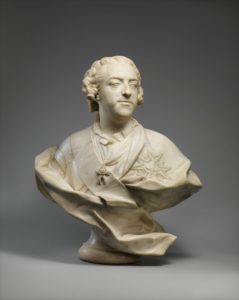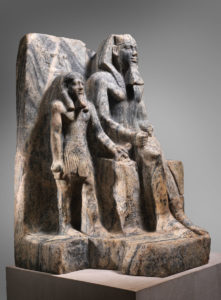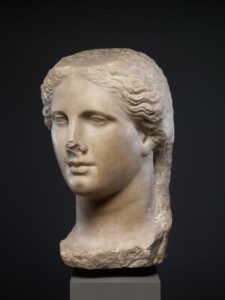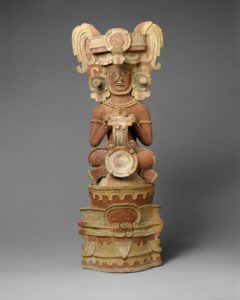What I wanted to explore with this final project is the way that rulers were represented by their people through art more specifically sculptures. How differently they were carved, for example, I wanted to see how their facial features differed from region to region. I want to see if the body types are idealistic and unrealistic or if they are plausible and reasonable.
Roman

The Romans never really liked to hold back in their sculptures. They made sure they got the Rulers imperfections in their sculptures because they wanted to be realistic and make sure that people know exactly what their ruler looked like. An example is the piece above is a Bronze statue of the emperor Trebonianus Gallus they didn’t make him look as good as possible they gave him a gut and they made sure to carve in the wrinkles on the face of Trebonianus. Romans were influenced by Greek and Egyptian art when they took over their land. Roman art is usually seen as having less worth to the Greek pieces because the Greek art was first and it looks more ideal.
French

The French enjoyed making their leaders look strong in sculptures. Something that I have noticed when looking over the sculptures is that the leaders are always dressed up in a dignified way. This is a good example of how French leaders were represented. This is Louis XV and the king is shown wearing a suit of armor, a mantle thrown over his left shoulder, with the plaque and the ribbon of the Holy Spirit and the cordon of the Golden Fleece very high-class stuff. This sculpture is also made out of white marble a material that was used by the French in a lot of their early works where they later started to use bronze to sculpt.
Egypt

Ancient Egyptians had a very strong connection to religion they made their sculptures with deities from their times. They lived to please their gods so it made sense that they would add gods to their artwork. This has been identified as Sahure, the second ruler of Dynasty 5. Seated on a throne, the king is accompanied by a smaller male figure the local god of the Coptite nome. This deity offers the king an ankh (hieroglyph meaning “life”) with his left hand. This is a great example of Egyptian sculpting because the rulers of Egypt in these days were seen almost as gods. It would make sense that their rulers were Seen as higher than some gods and I think we don’t see a lot of sculptures like this because most other regions like to keep religion out of their sculptures and are more focused on making their leaders look good.
Greek

Greeks wanted to be perfect. The sculptures of emperors and royals from Greece usually have perfect figures. They give them 6 packs and a really lean and fit body they take away the imperfections from their faces so that they can look their best. The Greeks change everything that they can in order to make their leaders look perfect and give them this godlike aura they also used marble as it was popular to use. This example is a bit beaten up but you can see how she has no wrinkles unlike the Romans her skin is smooth and her face seems symmetrical and there is detail on her hair. This is showing the head of a Ptolemaic queen and she is really well made which sums up how Greek art is made.
Mayan
Mayan pieces of art are a lot different than anything else on this list because they weren’t really influenced by anyone else here because they were more isolated and didn’t really have contact with Europe. The material looks more like ceramics which is also unique as these other places use marble. Mayans also didn’t really care about looking good which is evident above the facial features aren’t even really even carved out with too much attention. What is shown in this sculpture is that the garments that they wear are important this is a king and his crown is fully carved out and attention to detail was very important as that is what showed dominance.
Conclusion
After looking at all these pieces It is evident that every generation influenced the next. Rulers were represented usually presented very powerful and a lot of these places tended to use marble as material to carve out of. What really connected all the early pieces is the fashion that they had. All the rulers were usually shirtless and wore nothing but their loincloth and their crowns or other pieces of importance. In conclusion, every work of art is unique however, you can see certain features being passed down from culture to culture and see the influence these cultures have had on each other.
Sources
https://www.metmuseum.org/art/collection/search/318345
https://www.metmuseum.org/toah/works-of-art/2002.66/
https://www.metmuseum.org/art/collection/search/543882
https://www.metmuseum.org/art/collection/search/198766
https://www.metmuseum.org/art/collection/search/247117


